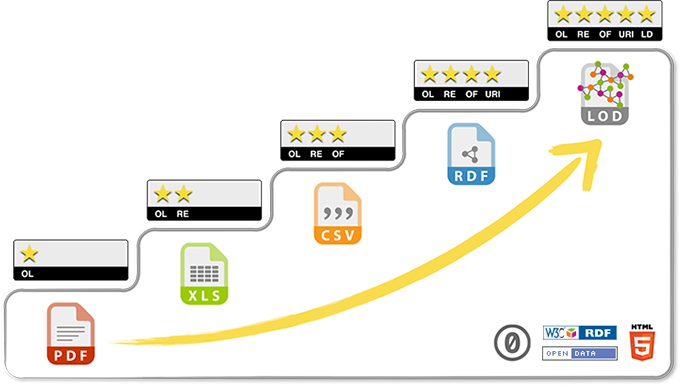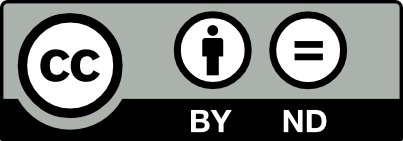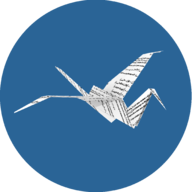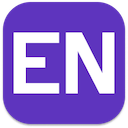
FAQ
What are the types of Creative Commons (CC) licences?It is permitted to:
Share – copy and distribute the work in any medium or format
Adapt – all changes, remixes and derivatives of work for any purpose are permitted
Under the following conditions:
Attribution – designation of the original work by any means
It is permitted to:
Share – copy and distribute the work in any medium or format
Adapt – all changes, remixes and derivatives of work are permitted
Under the following conditions:
Attribution – designation of the original work by any means
Identical conditions – works resulting from creating, remixing or processing on the basis of the work must be disseminated under the same licence
It is permitted to:
Share – copy and distribute the work in any medium or format
Adapt – all changes, remixes and derivatives of work are permitted
Under the following conditions:
Attribution – designation of the original work by any means
Non-commercial use - The works must not be used for commercial purposes (gaining material benefits)
It is permitted to:
Share – copy and distribute the work in any medium or format
Adapt – all changes, remixes and derivatives of work are permitted
Under the following conditions:
Attribution – designation of the original work by any means
Non-commercial use - The works must not be used for commercial purposes (gaining material benefits)
Identical conditions – works resulting from creating, remixing or processing on the basis of the work must be disseminated under the same licence
It is permitted to:
Share – copy and distribute a work in any medium and format for any purpose
Under the following conditions:
Attribution – designation of the original work by any means
No derivative works – when creating, remixing or transforming the work, the modified contents must not be distributed
It is permitted to:
Share – copy and distribute the work in any medium or format
Under the following conditions:
Attribution – designation of the original work by any means
Non-commercial use - The works must not be used for commercial purposes (gaining material benefits)
No derivative works – when creating, remixing or transforming the work, the modified contents must not be distributed
No copyrights
The work containing this label has been placed in the public domain. The author(s) waive all rights to the work
It is permitted to:
Alter, reproduce, distribute and perform the work without asking for permission
If you have problems choosing a Creative Commons license, please use the simulator available here.
What are the Open Access (OA) models?Open Access (OA) is categorised into:
- on the basis of use rights:
Gratis OA – free online access. Gratis OA removes price barriers, however not barriers related to the need to obtain consent for uses extending beyond private use.
Libre OA – free online access, and the absence of certain copyrights and licensing restrictions. A document uploaded for use usually under a free licence (e.g., Creative Commons).
- by virtue of the location of the stock:
Gold OA – the full text of the document and associated content is available immediately on the publisher's website. Usually defined by the presence of the journal in the Directory of Open Access Journals (DOAJ) Costs are usually incurred by the authors.
Green OA – the full text of the document is available in the repository (so-called self-archiving), regardless of the publication by the publisher. The published pre- or post-print versions of documents, as well as in the publisher's final version. Please note that some publishers may impose an embargo (usually 12 months) on depositing in open repositories.
Hybrid OA – the full text of the document and related content is immediately provided on the publisher's website, where only part of the articles is published in open access. In this case the author shall bear the costs of publication.
Brown OA – a combination of gold and hybrid open access. Articles are available on the publisher's website but journals have no representation in the DOAJ. Moreover, such articles do not have a clearly defined licence (open access area free of charge).
Diamond/Platinum OA – similarly to Golden OA, articles published in this journal have an open licence. The authors do not incur publication costs. Publications are made possible by fees collected from library consortia, grant funding and/or advertising revenues, for instance. These journals are indexed in the DOAJ, similarly to the gold OA.
Black OA – created due to the need for quick, easy and free access to articles and other materials. It allows for the free access to articles without observing the rights of the publisher and/or the author. It has developed through the sharing of paid articles and books on pirate sites: such as Sci-Hub, libgen or z-lib; through academic social media: e.g., Academia.edu, Mendeley or ResearchGate; and through traditional social media: e.g., #ICanHazPDF on Twitter.
Preprint and postprint. Can they be deposited in open repositories?PREPRINT – it is a preliminary version of a scientific publication which has not yet been covered by the review and publishing process. This version of the work may be placed in a repository.
POSTPRINT – otherwise: Author Accepted Manuscript (AAM) it is a peer-reviewed and revised version of a publication that does not yet have a publisher's layout. The publication of such version of the article in the repository depends on the agreement signed with the publisher or the publishing policy of the journal. Information on the policies of many journals is provided through the Sherpa/Romeo database.
What are open access publishing programmes?Open publishing programmes are licensing agreements within the Polish Virtual Library of Science and licensed institutions to purchase and share resources.
Published below is a list of programmes which may researchers at the Medical University of Bialystok:
- Elsevier Open Publishing Programme
Programme A – The fee for publication in a hybrid or gold open access journal covered by the programme is fully covered by the national licence fee. In 2022, the pool of articles in the programme is to be decided [dated 20.01.2022]
Programme B – The fee for publication in a hybrid or gold open access journal covered by the programme is paid at a discount by the author or institution. Programme B is available for articles sent in 2019, 2020 and 2021. Articles sent in 2022 will only gain access to programme B after the pool from programme A has been used up
Programme A and B include 1777 hybrid and gold open access journals. A complete list of journals and information regarding the programme is available here (polish site).
- Springer Open Publishing Programme
The publication fee for the programme is entirely covered by the national licence fee. In 2022, the pool of articles in the programme amounts to 1311 [dated 18.07.2022].
The programme covers 1937 hybrid journals of Springer. A complete list of journals and information regarding the programme is available here (polish site).
- ACS Consortium Open Publishing Scheme
The fee for open publication under the CC-BY licence is fully covered under the consortium licence. When sending the manuscript for review, the programme automatically informs the author whether the manuscript is eligible for the programme. If the author meets the requirements, they are offered open access publication with retention of copyright under a CC-BY licence under this programme. In 2022, the pool of articles in the programme amounts to 346. Current pool: 145/346 [dated 06.06.2022]
The programme covers 78 journals published by ACS (12 open access, 66 hybrid). A complete list of journals and information regarding the programme is available here (polish site).
- LWW Consortium Open Publishing Scheme
The publication fee for the programme is waived with a discount code obtained after successful verification. You can apply to the programme once your article has been accepted for publication. The programme allows the publication of up to 13 articles accepted for publication in the current year per annum [dated 30.06.2022].
The programme includes 254 LWW hybrid journals. A complete list of journals and information regarding the programme is available here (polish site).
The programme has been reactivated since June 2021, following funding and signing of new agreements for 2021. Articles published in the traditional model will be permitted to be converted to open access (retroactivation).
- MDPI journals open publishing programme
Under the programme, authors receive a 10% discount on the publication of any type of article in MDPI journals. The programme does not have a limit of discounted items. However, the 10% discount granted under the programme cannot be combined with other available discounts (e.g., vouchers, discounts for members of associations, etc.).
Additional information about the service is available here.
What is a Sherpa/Romeo?It is a database containing the policies of publishers on depositing works in open institutional repositories and the terms of copyright granted to authors on a journal-by-journal basis (where available).
To check the policy of a journal or a publisher, click here.
What is the DOAJ (Directory of Open Access Journals)?It is a directory of scientific journals that publish in an open access model and follow good publishing practices. DOAJ aims to increase the visibility and accessibility of open access journals.
Additional information about the repository is available here.
What is DOAB (Directory of Open Access Books)?It is a service that operates similarly to the DOAJ but focuses on open access to monographs and promoting and increasing the visibility of academic books.
More information about the service is available here.
What is re3data (Registry of Research Data Repositories)?It is a service gathering information on open repositories.
More information about the service is available here.
How to search for open access publications?- Dissemin
This project promotes green open access. The platform collects metadata and uses them to analyse the availability of full texts of scientific publications, the policies of publishers and the possibility of opening previously closed works. The platform allows, among other things, searching for texts by title, author, date or document type.
More information is available on the project website.
- EndNote Click (formerly Kopernio)
It is a free plug-in for Chrome and Firefox browsers which facilitates access to full-text versions of scientific papers (if such versions exist). In addition, it allows to connect using your library account in order to access journals subscribed to by the library.
The plug-in is available for download here.
- Google Scholar Button
It is a free plug-in for Chrome, Firefox and Safari browsers. It offers a search for academic articles, facilitates access Google Scholar from any website, and allows search for a full text of a paper online or in an academic library.
The tool can be downloaded by clicking on “Settings” at the Google Scholar, and later by clicking on the link.
- Open Research Button
It is a platform/plug-in which navigates to a free version of the text that the user has found on a paid platform. The Open Research Button allows to search texts by title, persistent identifiers (e.g., DOI, PMID) or a link to the article page.
The plug-in is available for the following browsers: Chrome, Edge, Firefox, Safari.
The platform and plugins are available on the Open Research Button website.
- Unpaywall
It is a free plug-in for the Chrome and Firefox browsers to facilitate access to free full-text versions of scientific papers (if such version exists).
The plug-in is available at the Unpaywall website.
What is a Data Management Plan (DMP)?Since June 2019 the National Science Centre has introduced obligations to prepare such plans as part of grant competitions.
NCN has prepared a frequently asked questions about DMPs – FAQ.
While preparing a Data Management Plan (DMP), the user must decide where and under what conditions the data will be made available. The repository where the data is made available must operate in accordance with FAIR principles, which state that the data must be Findable, Accessible, Interoperable and Reusable.
More on FAIR.
Tools for supporting the process of creating a data management plan:
- DMPonline
DMPonlline is an online wizard which allows to create a DMP. The form allows to create a plan containing the most important information about our project and to adapt it to the specifics of the research and the type of data generated. The service contains a number of pointers, and pre-made DMP templates required by research funding bodies. Finished plans can later be downloaded and shared.
- DMPTool
DMPTool is an online application designed to assist researchers in creating DMPs. The DMPTool provides an easy-to-use wizard for creating a PMD which meets the requirements of funding bodies. It also includes direct links to the websites of the funders, help text to answer questions and resources on best practice in data management.
- DMP template
The PMD template was prepared by the Plenipotentiary for Open Access. It is intended to serve as a basis for the National Science Centre grant applicants to rely on. The template is available in two language versions: English and Polish.
What should a Data Management Plan contain?- Description of how data are collected/generated and the type of collected data;
- Description including responsibilities and activities related to the supervision and control of data accuracy and quality;
- Short and long-term storage and data protection plan;
- Data access and data sharing plan (including definition of licences)
- Information about the owner of copyright and intellectual property rights in the data and the person responsible for data management;
- Documentation and standards for data description (metadata);
- Requirements and procedures related to the ethical aspects of collecting data;
- Identify what resources will be needed to carry out the DMP.
What are the benefits of a good Data Management Plan?- Increase in the quality and reliability of the data;
- Easy data localisation;
- Efficient data management, preventing unnecessary duplication and overwriting of data;
- Improved security of stored data;
- Easier preparation of data for sharing;
- A professional and competent plan may increase your score when submitting a grant.
What are the FAIR principles?FAIR Data principles have been formulated to assist researchers and to properly prepare data for sharing.
FAIR Data lays down the rules to make the data accessible to both the user and the computer software searching the databases.
FAIR principles:
- Findable – possible to be found;
- The dataset shall be accompanied by metadata which makes the dataset discoverable by both humans and computer programs
- The collection is assigned a unique identifier (e.g., DOI), which is also an element of the metadata describing the collection; it is also important to properly associate the collection with its authors, which is why it is important to have the option to enter the researcher's ID (e.g., ORCID) in the description
- Metadata shall be indexed in searchable public databases
- Accessible – accessible to everyone;
- The dataset, or at least the metadata, can be accessed directly through a unique identifier and does not require additional tools or software
- Metadata is always available, even if the dataset itself has already been deleted or moved
- Interoperable – possible to combine with other data;
- Data and metadata shall be provided in a format that can be easily read and processed by both humans and computers
- Datasets and the metadata describing them shall contain links to other linked datasets
- Reusable – made in a manner allowing them to be used again;
- Metadata contains numerous attributes that accurately describe the dataset and help users determine their relevance for their own research
- The filing system shall contain a licence stating clear conditions for re-use and processing
- Metadata shall clearly identify the author and the place of creation of the data
- Metadata shall be structured according to generally accepted standards specific to the discipline and the type of data
All the above principles are actually guidelines for working with data. The FAIR principles continue to be developed and clarified by the international community - the GO FAIR Initiative.
Additional information is available at www.go-fair.org
What is 5-star Open Data (5* Open Data)?It is a concept developed by Tim Bearns-Lee, creator of the World Wide Web and precursor to Linked Data. 5-Star Open Data is very simple in its assumptions. It describes how data should be accessed, tagged and interconnected.

★ - data should be accessible, in any form, via the World Wide Web. The condition is to make the data available under any open licence, such as Creative Commons.
★★ - data should be available in a structured form (e.g., as a spreadsheet instead of a scan of a table)
★★★ - data should be available in an open format (e.g., CVS in addition to an Excel file)
★★★★ - data should be tagged using URI (Uniform Resource Identifier) to facilitate identification and unambiguous designation of resources
★★★★★ - data should be linked to other data to provide context
What is the Polish Medical Platform?It is a partnership project across seven medical universities:
- Wroclaw Medical University – project leader,
- Medical University of Bialystok,
- Medical University of Gdansk,
- Medical University of Silesia in Katowice,
- Medical University of Lublin,
- Pomeranian Medical University,
- Medical University of Warsaw
- and at the Prof. Jerzy Nofer Institute of Occupational Medicine in Lodz.
The main objective of the Polish Medical Platform project is to make the scientific resources of the PPM Project Partners available digitally by depositing them on project servers in an electronic form and providing metadata, as well as making them available on the Internet in formats suitable for machine processing.
More information about the project can be found on the website of the Polish Medical Platform (polish site).
What is Bridge of Knowledge?Multidisciplinary Open Knowledge Transfer System – Bridge of Knowledge is a platform created and launched by Gdansk University of Technology in 2017. It aims to help researchers promote their achievements and scientific output. The platform has an open repository for scientific publications and an open repository for scientific data. Publishing the full texts of articles in open access increases their visibility and facilitates and accelerates scientific communication and collaboration between researchers.
What is the Bridge of Data?Multidisciplinary Open Knowledge Transfer System – Open Research Data – Bridge of Data . It is an open repository of research data created in cooperation between the Gdansk University of Technology, the University of Gdansk and the Medical University of Gdansk. The repository provides the infrastructure to archive and make available the information and materials collected by researchers during the research process. By increasing accessibility, improving the quality of research and the reusability of scientific resources.
What is Plan S?Plan S is a project of research funding agencies and foundations affiliated with cOAlition S in September 2018. Plan S obliges institutes and universities to ensure immediate open access to scientific publications arising from public or non-public grants awarded by national, regional or international funding bodies and research councils. Plan S is based on 10 principles complemented by detailed guidelines for scientific articles. The rules and the translations are available at the cOAliton S website (original text) and at the Open Science website (Polish translation).
Additional information on cOAlition S activities and the development of Plan S are available here.
Information is also updated at the Open Science (Polish site) website.
What are the benefits of publishing in Open Access?- For the author
- Increased promotion of own research;
- Increased visibility and interest in papers resulting in increased citations;
- Establishing new scientific contacts and starting collaborations on common interests.
- For Universities
- Increased prestige of the university by increasing the visibility of research results;
- Promotion of the potential and interests of academic personnel;
- Supporting student education;
- Assistance with administrative tasks, e.g., evaluation of academic personnel.
What is the Journal Checker Tool?Journal Checker Tool (JCT) is a service that allows researchers to check the compliance of journals and publishing platforms with Plan S. JCT checks whether a journal offers an open access publication path with a CC BY (or equivalent) licence and without embargo and whether authors can retain copyright. The service is available in beta version.
What is the Rights Retention Strategy (RRS)?The RRS is designed to allow an author to retain the right to decide to publish the results of their research without a time embargo imposed by the publisher, e.g., in an open access repository under a CC BY licence. The strategy is that the author should be able to place the manuscript at least in postprint (Author Accepted Manuscript) in open access repositories at the same time as the publication.
For this reason, researchers funded by cOAlition S members shall:
- Inform the publisher in a Submission Letter or Acknowledgements or both that the Author Accepted Manuscript (AAM) resulting from this submission is licensed under CC BY:
“This research was funded, in whole or in part, by [Organisation name, Grant #]. A CC BY or equivalent license is applied to [the AAM/the VoR] arising from this submission, in accordance with the grant’s open access conditions.”
- After publication: make the AAM version of the publication available in the repository.
In the event of any dispute with the publisher, authors should contact their organisation organised within cOAlition S.
Additional information on RRS is available here.
Bibliography - resources usedList of resources used to create the FAQs
- Open access [electronic document] / Peter Suber; [translated by: Roman Bogacewicz, Maciej Chojnowski, Wojciech Fenrich, Joanna Kielan, Andrzej Leśniak, Krzysztof Siewicz, Michał Starczewski, Jakub Szprot] – Warsaw: Wydawnictwa Uniwersytetu Warszawskiego, cop. 2014.
- Creative Commons website, https://creativecommons.org/
- Creative Commons Polska website, https://creativecommons.pl/
- Otwarta Nauka Website, https://otwartanauka.pl
- Uwolnij Nauke Website, https://uwolnijnauke.pl
- OpenAIRE organisation website https://www.openaire.eu/
- 5-star Open Data website https://5stardata.info/en/
- Website of the cOAlition S consortium https://coalition-s.org
















